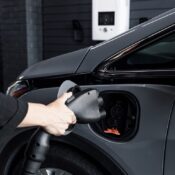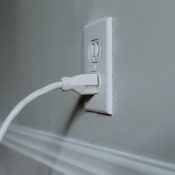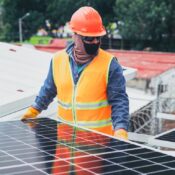
As the world shifts towards a more sustainable future, electric vehicles (EVs) are becoming increasingly popular. With this surge in popularity comes the need for EV charging stations at home. As a trusted electrical services company, we’re here to guide you through the do’s and don’ts of EV charging to ensure safety, efficiency, and longevity.
1. Do: Opt for Hard-Wiring Over a Plug
While plug-in chargers might seem convenient, hard-wiring your EV charger is a more secure and reliable option. Hard-wired installations are typically more robust and less prone to wear and tear compared to plug-in counterparts.
2. Do: Ensure Your Charger is Capable of More Current and Follows Manufacturer Recommendations
Always ensure that your charger can handle the current required by your EV. Following the manufacturer’s recommendations ensures optimal charging speeds and prevents potential electrical issues.
3. Don’t: Install Your Charger on a Ground Fault Circuit
Ground fault circuits are designed to protect against electrical shocks by shutting off the power when they detect an imbalance. However, EV chargers can sometimes cause these circuits to trip unnecessarily, leading to interrupted charging.
4. Do: Consider Costs and Effectiveness
While some charging solutions might seem cheaper upfront, they may reduce the effectiveness of the charging process or lead to higher costs in the long run due to inefficiencies or potential repairs.
5. Don’t: Use 6-2 Romex Cable
6-2 Romex cables are not designed to handle the continuous load that EV chargers require. Using inappropriate cables can lead to overheating and potential fire hazards.
6. Do: Consider a ChargePoint Charger
ChargePoint chargers are renowned for their reliability and wide compatibility with various EV models. They also offer features like energy tracking and remote control through their app.
7. Do: Consider a Tesla Charger if You Own a Tesla
While Tesla chargers are primarily designed for Tesla vehicles, they offer fast charging speeds and seamless integration with Tesla’s ecosystem. If you own a Tesla, it’s a no-brainer to consider their proprietary charger.
8. Do: Think About the Installation Location
Install your charger in a location that’s convenient for your daily routine. Ideally, it should be near where you park your EV, protected from the elements, and easily accessible. Ensure the location also has a strong electrical infrastructure to support the charger.
9. Do: Opt for Tandem Breakers Over a Sub Panel
Tandem breakers, also known as duplex, twin, or double breakers, allow for two circuits in one slot. Using tandem breakers can save space and reduce the need for a sub panel, which can be more expensive and require more extensive installation.
In Conclusion
Setting up an EV charging station at home requires careful consideration of various factors. By following these do’s and don’ts, you can ensure a safe, efficient, and long-lasting charging solution for your electric vehicle. Always consult with a professional electrician when making decisions about your home’s electrical system.







